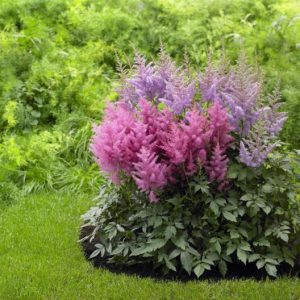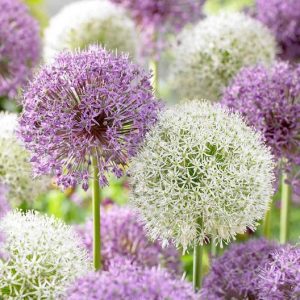You’ve probably had that moment driving through a quaint neighborhood, looking out the window, and doing a double-take when you encountered a perfectly adorable garden. But what made it perfect wasn’t an organized row of flowers or an overly planned design. It was more of a natural explosion of color, and a large assortment of textures, shapes and sizes. That’s the cottage garden! Let’s dig a little deeper and determine how you can start your own cottage garden with a few easy steps and flower suggestions.
A Little Garden History
The name for “cottage gardens” didn’t come about because the flowers are necessarily reminiscent of the English countryside, but because they were densely planted very close to the homes of British laborers who didn’t have much space. They needed the flowers and herbs to sustain their families, to offer remedies, and to deter unwanted pests—all for practical purposes. The concept eventually took a life of its own and transformed into a much more lavish and lovely appearance in Victorian times. Practicality shifted to a more ornamental and decorative display of flowering herbs, fruits and blooms. This has carried on to the version we know and love today.

Design Aesthetic & Plant Advice
There’s a long list of ways to achieve the cottage look. If you’re just getting started, don’t be overwhelmed with trying to master them all. Just select a couple of key features from this list to kick things off.
- Dense plantings
- Herbs & edibles
- Informal layout
- Footpaths are common
- Stone wall or fence for climbers
- Includes fragrant flowers
- Combines annuals & perennials
- Utilizes found objects or accents like birdbaths
The list of plants to choose from is truly never-ending, but we like to suggest a variety of heights, textures, edibles, pollinators and fragrant choices. These are all great for starters:
Astilbe: it has feathery flowers, a range of soft colors, and is quite tall and bushy—perfect as a central feature.
Lavender: the edible aspect gives it a nod to traditional cottage gardens, while the tall purple stalks are perfect along pathways or edges.
Foxglove: since these flowers tolerate shade, they work well up against the house or a structure that may be blocking light… and their blooms are stunning!
Allium: these huge globe-like ornamental onions add a special flare wherever they’re placed. Bunch them together in several different groupings throughout the garden for the best impact.
Purple Coneflower: bright, tall and visible from afar, echinacea is a quintessential cottage garden bloom. It’s an all-time favorite perennial!
Peonies: large, rose-like blooms in a rainbow of colors will add charm, character and romance to any cottage garden. Peonies are one of only a few bulbs that can be planted in the spring or the fall, and they are incredibly prolific.


Getting Started
Find your space. Since you’ll need lots of plants to create a dense appearance, you might want to start with a small area. It’s less expensive and less to maintain!
Choose your plants. Variety is key here. Choose tall and short perennials, a wide range of colors, some climbers for a structure, and toss in some annuals for fun. Combine seeds with bulbs, some herbs and definitely include pollinators.
Be relaxed. Plant your selections in an unorganized manner instead of a tidy plan. You don’t need rows, and tall items can be scattered about, not always in back as you would do for a structured garden design.
Keep it up. Continue to add flowers over time and allow the garden to be flexible and ever changing.
Maintenance
While the cottage garden can look a little messy and overgrown at times (and that’s part of it’s charm), it does require some upkeep if you want to maintain a vibrant and lasting landscape. Simply make time to:
- Remove flowers that are taking over and crowding out their neighbors.
- Divide perennials to manage their size and help their performance.
- Deadhead flowers so the garden stays fresh.
- Try an automatic watering system for easier care.
- Add mulch where possible to prevent weeds.
The Cottage Garden is one of many great themes you can create at home. For inspiration on other garden types like Memory Gardens, Kids’ Gardens, Container Gardens and much more, visit this page.